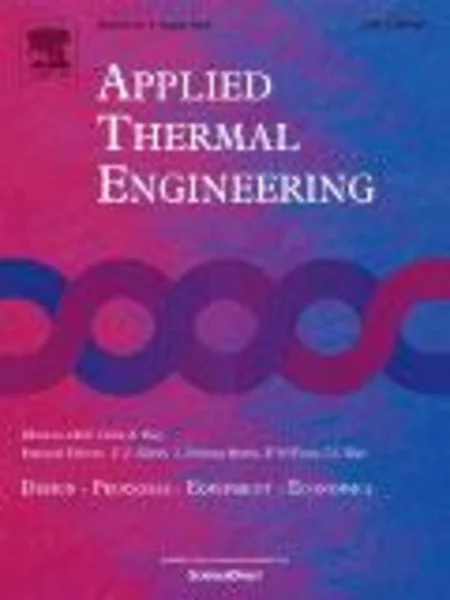-
impact of district heating and groundwater heat pump systems on the primary energy needs in urban areas
جزئیات بیشتر مقاله- تاریخ ارائه: 1392/01/01
- تاریخ انتشار در تی پی بین: 1392/01/01
- تعداد بازدید: 800
- تعداد پرسش و پاسخ ها: 0
- شماره تماس دبیرخانه رویداد: -
this work is focused on the planning of rational heating systems for urban areas. from the sustainability viewpoint, district heating is an important option to supply heat to the users in urban areas. the energy convenience of such option depends on the annual energy request, the population density and the efficiency in heat production. among the alternative technologies, geothermal heat pumps (both open loop and closed loop heat pumps) play a crucial role. this paper aims to propose a procedure to select which users in an urban area should be connected with a district heating network and which ones should be heated through an alternative technology, in order to reach a globally optimal system from the energy viewpoint. the procedure proposes district heating as the initial choice for all the users. the users are then progressively disconnected to the network, according with the primary energy required to supply them heat, and the alternative technology is considered for disconnected users. here, ground water heat pump is considered as the alternative technology. the total primary energy request is assumed as the objective function to be minimized. to reach this result, the exergetic cost of heat supplied through heat pumps system must be evaluated. such evaluation is not trivial, as it must include proper analysis of both the district heating network and the alternative system. in the case of densely populated areas, an additional consideration is necessary: the subsurface thermal degradation caused by heat pump installations may affect the performances of surrounding installations. this impact is calculated through a thermo-fluid dynamic model of the subsurface. the application to an italian town is considered as a test case. the optimal configuration of the overall urban heating system is obtained. this configuration corresponds to the minimum primary energy request to supply heat to all the users (those connected to the network and those using an alternative heating system).
حوزه های تحت پوشش رویداد
مقالات جدیدترین رویدادها
-
استفاده از تحلیل اهمیت-عملکرد در ارائه الگوی مدیریت خلاقیت سازمانی و ارائه راهکار جهت بهبود
-
بررسی تاثیر ارزش وجوه نقد مازاد بر ساختار سرمایه شرکت های پذیرفته شده در بورس اوراق بهادار تهران
-
بررسی تأثیر سطح افشای ریسک بر قرارداد بدهی شرکت های پذیرفته شده در بورس اوراق بهادار تهران
-
بررسی تأثیر رتبه بندی اعتباری مبتنی بر مدل امتیاز بازار نوظهور بر نقد شوندگی سهام با تأکید بر خصوصی سازی شرکت ها
-
تأثیر آمیخته بازاریابی پوشاک ایرانی بر تصویر ذهنی مشتری پوشاک ایرانی (هاکوپیان)
-
ارزیابی نقش دلبستگی به مکان درطراحی سیتی هال اهواز
-
معرفی روش نوین آنالیز سریع آسیب پذیری لرزه ای ساختمانها و کاربرد آن در مدیریت بحران با بهره گیری از تکنیک gis
-
نقش فن آوری اطلاعات و ارتباطات در فرایند یاددهی – یادگیری درمحیط های آموزشی
-
using neural & fuzzy-neural approaches in school trip distribution modeling
-
solution of two-dimensional shallow water equations by tvd-maccormack scheme
مقالات جدیدترین ژورنال ها
-
مدیریت و بررسی افسردگی دانش آموزان دختر مقطع متوسطه دوم در دروان کرونا در شهرستان دزفول
-
مدیریت و بررسی خرد سیاسی در اندیشه ی فردوسی در ادب ایران
-
واکاوی و مدیریت توصیفی قلمدان(جاکلیدی)ضریح در موزه آستان قدس رضوی
-
بررسی تاثیر خلاقیت، دانش و انگیزه کارکنان بر پیشنهادات نوآورانه کارکنان ( مورد مطالعه: هتل های 3 و 4 ستاره استان کرمان)
-
بررسی تاثیر کیفیت سیستم های اطلاعاتی بر تصمیم گیری موفق در شرکتهای تولیدی استان اصفهان (مورد مطالعه: مدیران شرکتهای تولیدی استان اصفهان)
-
بررسی نقش مدیریت منابع انسانی پویا در ارتقاء بهره وری و عملکرد کارکنان شرکت آپاداناسرام
-
عقد ضمان در نظام بانکی
-
بررسی اصول و مبانی اثر معنویات دینی در زندگی اجتماعی دانش آموزان
-
دکترین رس ایپسا لوکویتور و کاربرد آن در مسئولیت مدنی res ipsa loquitur
-
the relationship between working capital management and criterions for value-based performance of the companies listed in tehran stock exchange




سوال خود را در مورد این مقاله مطرح نمایید :